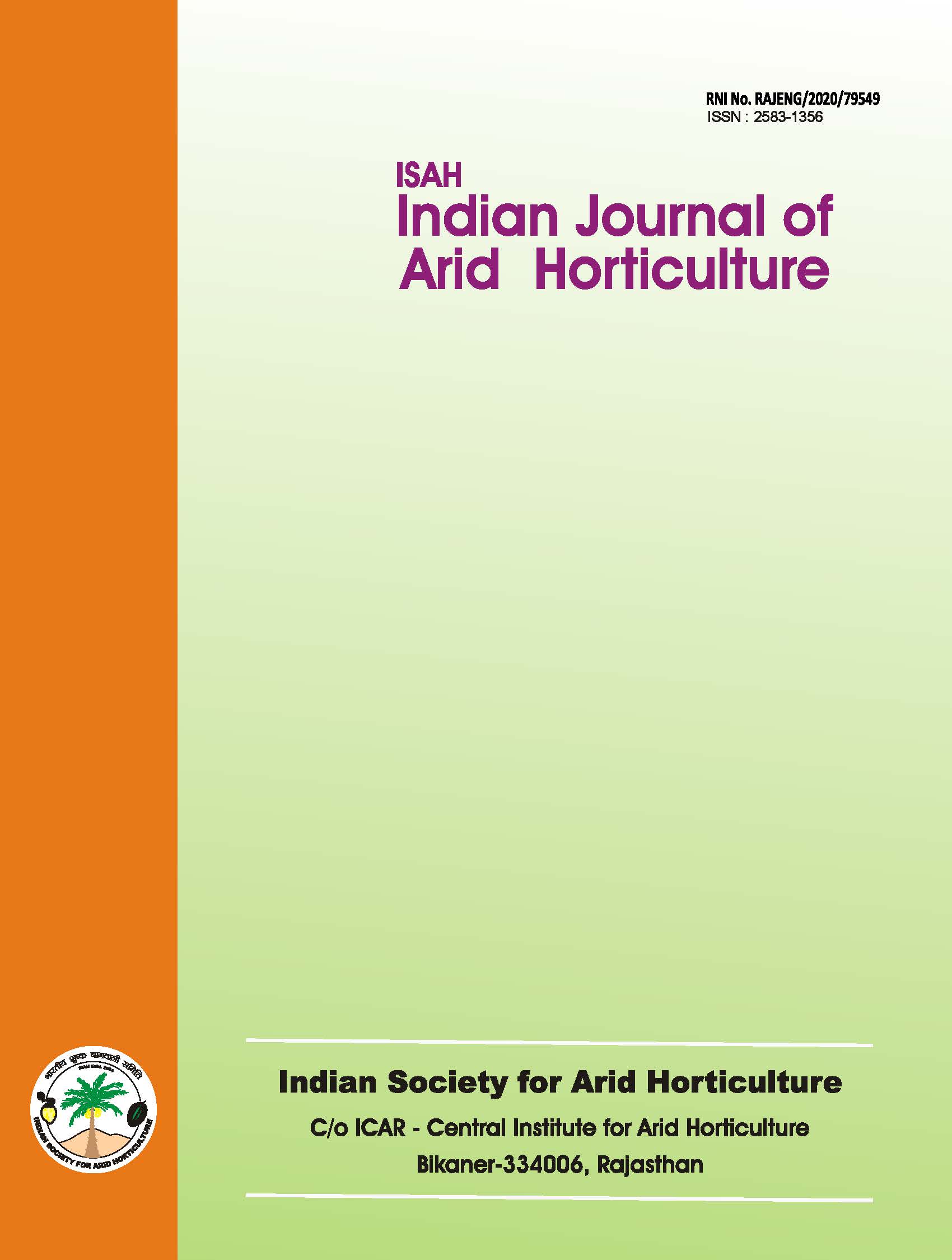Incidence of ber butterfly, Tarucus indica in Bikaner district of Rajasthan.
Keywords:
butterfly, TarucusAbstract
Ber is the most important arid fruit crop contributing over 80 per cent of the total fruit area in Bikaner district of western part of Rajasthan and cultivated in approximately 600 ha area in the district. During recent past, a decline in its productivity has been observed and there are many factors responsible for it. Among those, incidences of pests and diseases have been found significant. As many as 80 insect species have been found feeding on ber tree in India (Butani, 1979). Ber fruit fly is one of the major insect causing considerable damage to the crop. Beside it, ber butterfly, Tarucus indica was reported in Gujarat on ber (Shah et al, 1990) has been pest of minor significance. However, for last few years, it has become the most destructive pest of ber in the district. Keeping in view the severity the present investigation has been made in order to study a delicate relationship of weather factor to the larva population and incidence and current status of T. indica at different locations of Bikaner district. The observations of larvae were recorded at weekly interval at ber orchard Krishi Vigyan Kendra, Bikaner.Downloads
Download data is not yet available.
References
Butani, D.K., 1979, Insert and Fruit. Periodical Expt. Book
Agency, Delhi.
Shah, A.H., Jhale, R.C., Patel, R.L. and Patel, GM.1990.First record of some pests of ber, Zizyphus mauritiana Lamark cultivated in south Gujurat. Ind. J. Ento.52 (1):161-163.
Downloads
Published
2025-03-11
Issue
Section
Short Communication
How to Cite
Incidence of ber butterfly, Tarucus indica in Bikaner district of Rajasthan . (2025). Indian Journal of Arid Horticulture, 4(1), 57-59. https://journals.acspublisher.com/index.php/ijah/article/view/21255

